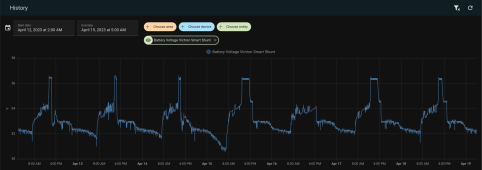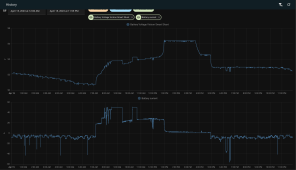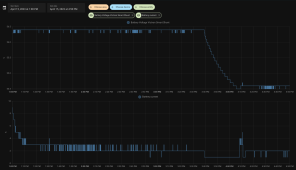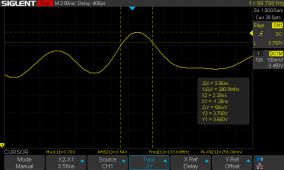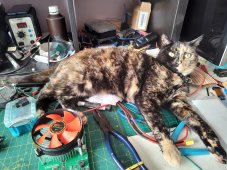Part of the work (hobby horse) I am doing with my DIY lithium system involves testing the "top and bottom end" responses of the system as a whole.
Questions are basically: In the setup, what happens at the top of charge with the sun fully on the panel? Also. What "should" or "should not" happen.
I can answer some of that, I think, but there are "shadow" areas of uncertainty which worry me.
One of them is basically the term of "low current overcharge". I'm trying to understand it and honestly been getting frustrated with the less than ideal explanations or any data for it.
My understanding gets me to there being a higher 'quiescent' current through the cell at 3.650V than say at 3.4 or 3.35. The question is, how much damage is or is not occurring at 3.650V quiescent versus a lower 'float' setting?
On one hand I can let the MPPT hold 14.40V for 3 hours and make sure any balancing or tapering has occurred. Or I can restrict it significantly. I can, given time and weather test both to see if there is/or how much benefit there actually is, but sometimes getting 1% more capacity could be costing you 1% your cycle life in addition to all the other things eating into that already.
Questions are basically: In the setup, what happens at the top of charge with the sun fully on the panel? Also. What "should" or "should not" happen.
I can answer some of that, I think, but there are "shadow" areas of uncertainty which worry me.
One of them is basically the term of "low current overcharge". I'm trying to understand it and honestly been getting frustrated with the less than ideal explanations or any data for it.
My understanding gets me to there being a higher 'quiescent' current through the cell at 3.650V than say at 3.4 or 3.35. The question is, how much damage is or is not occurring at 3.650V quiescent versus a lower 'float' setting?
On one hand I can let the MPPT hold 14.40V for 3 hours and make sure any balancing or tapering has occurred. Or I can restrict it significantly. I can, given time and weather test both to see if there is/or how much benefit there actually is, but sometimes getting 1% more capacity could be costing you 1% your cycle life in addition to all the other things eating into that already.




